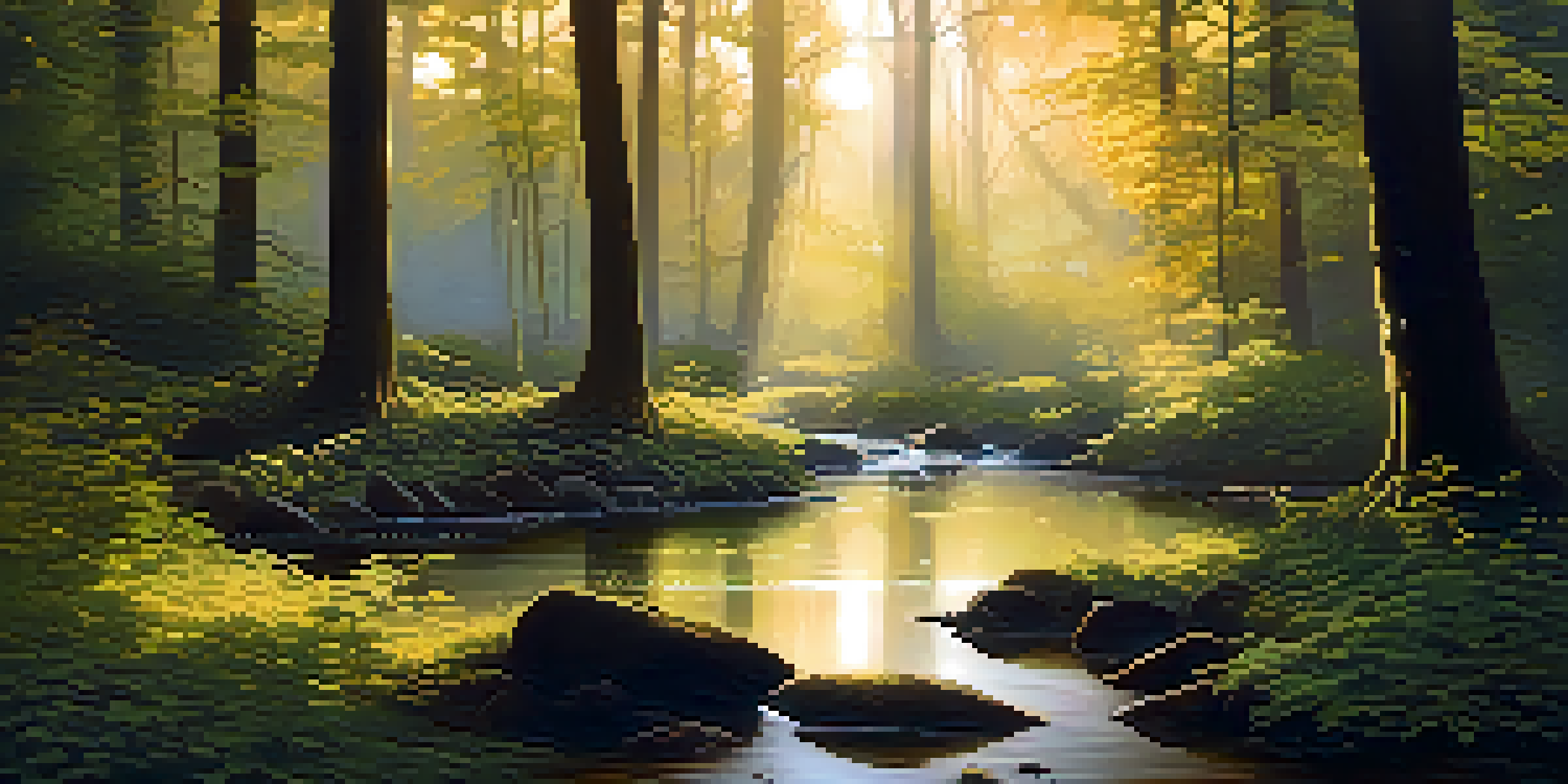Soundscapes: Building Atmosphere and Mood in Movies

Understanding Soundscapes in Film
Soundscapes are the auditory environments created in films, encompassing everything from dialogue to ambient sounds. They play a crucial role in shaping the viewer's experience, influencing how we perceive scenes and characters. Just like a painter uses colors to evoke emotions, filmmakers use sound to build atmospheres that resonate with the audience.
The Role of Background Sounds
Background sounds, often overlooked, contribute significantly to a film's mood. Think about the subtle rustling of leaves in a horror movie, which can heighten tension and anticipation. These sounds create a sense of realism, allowing the audience to immerse themselves more deeply into the story.
Soundscapes Shape Viewer Experience
Soundscapes, including dialogue and ambient sounds, are essential for creating the emotional atmosphere in films.
The Power of Music in Film
Music is a powerful tool in film soundscapes, often dictating the emotional tone of a scene. A suspenseful score can make your heart race, while a soft melody can bring tears to your eyes. By carefully selecting the right pieces, filmmakers can guide the audience's feelings, making every moment more impactful.
Dialogue: The Heartbeat of Cinema
Dialogue is essential for storytelling, but its delivery can change the entire atmosphere of a scene. The way a character speaks, their tone, and even their pauses can create tension, humor, or intimacy. Filmmakers strategically place dialogue within the soundscape to enhance its emotional weight and ensure it resonates with viewers.
Music Guides Emotional Responses
Through carefully chosen music, filmmakers can dictate the emotional tone of scenes, enhancing viewer engagement.
Creating Tension with Silence
Silence can be just as powerful as sound; it can draw audiences in or create discomfort. A moment of silence before a climactic event can build anticipation, making viewers hold their breath. This tactic highlights the significance of what comes next, making it all the more dramatic.
Layering Sounds for Depth
Layering different sounds creates a more immersive environment, adding depth to the film's atmosphere. For instance, combining the sounds of a bustling café with distant street noises can transport the audience right into the heart of the scene. This technique helps to craft a multi-dimensional experience that feels alive and dynamic.
Silence Builds Dramatic Tension
Strategic use of silence in film can significantly heighten anticipation and underscore critical moments.
Sound Editing: The Unsung Hero
Sound editing is often behind-the-scenes work that plays a vital role in the final product. Editors meticulously select and adjust sounds to ensure they align perfectly with the visuals. This attention to detail helps achieve the desired mood, whether it’s the soft whisper of wind or the loud crash of thunder.
The Future of Soundscapes in Film
As technology advances, the possibilities for soundscapes in film are expanding. Innovations like Dolby Atmos allow for a more immersive audio experience, enveloping the audience in sound from all directions. This evolution promises to redefine how we connect with stories, making the soundscape an even more crucial aspect of filmmaking.